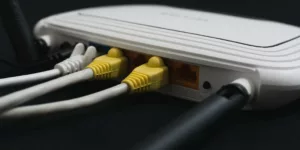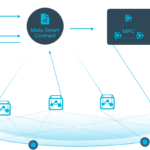It’s hard to imagine a time before the internet. From weekly grocery shopping to connecting with old friends, there’s simply no denying the fact we all place a heavy reliance on the web, with 86% of UK adults connecting to the internet on a daily basis. In fact, without an available internet connection, many of us actually start to feel a little lost.
Growing internet speeds and the rise of mobile technology have only increased that dependence, as the world finally seems to be free of those painfully slow dial-up connections. According to the latest ONS figures, 90% of all UK households had access to the internet in 2018, and 98% of those homes were using a broadband connection.
While the extent of broadband’s popularity may not come as much of a surprise, your search for the best internet package is bound to present you with all kinds of confusing industry jargon; leaving you a little frustrated as you try to decipher the meaning of this seemingly foreign digital language.
So, we’ve put together a quick beginner’s guide on what makes home broadband so popular, and why you certainly shouldn’t opt for anything else in 2019.
What is Broadband?
Simply put, broadband provides the fastest possible internet connection, offering high-speed data transmission through a “broader band” of frequencies. First emerging in the early 2000’s, broadband has revolutionized the way we connect to the internet, allowing us to access it at any time due to the fact it’s always switched on.
Typically running on a fixed line connection, you’ll be relieved to know that broadband doesn’t affect your phone line, either, so you’ll always be free to have a quick chat while surfing the web at the same time. Ultimately, once you’ve switched from dial-up to broadband, you’ll feel as though your connection has been submerged in water and only now been able to come up for air.
Understanding Broadband Speeds
Although it’s true that broadband always offers a high-speed connection to the internet, the extent of that speed will depend entirely on what kind of package you go for. Internet service providers (ISPs) offer broadband connections for people of all budgets, with each one coming with different download and upload speeds.
It all depends on what you can afford and how much you’re likely to use the internet in your own home (and what for). Speeds are measured in Megabits per second (Mbps), and this measurement essentially indicates how quickly you can expect to complete tasks online.
If you still aren’t sure of what kind of speed you should be looking for, then the latest Ofcom figures show that the average download rate has risen from 36.2 Mbps to 46.2 Mbps, while the average upload speed is up to 6.2 Mbps from 4.3 Mbps. Whether or not you need to be above these speeds is completely up to you.
The Different Types of Home Broadband
There are numerous types of home broadband connections to choose from, each one offering different connection speeds and coming with varying price tags. But which ones should you be considering?
Fast Broadband- ADSL
This is currently the most popular form of broadband connection in the UK. Running through a standard telephone line, an asymmetric digital subscriber line (ADSL) uses a network of copper wires to connect your home to the local telephone exchange.
Although some ADSL connections can offer speeds of up to 24 Mbps, it’s important to note that your broadband speed will depend on the distance between the telephone exchange and your home, since longer lengths of copper will cause the signal to gradually deteriorate. However, if you’re just looking for a standard broadband connection, then ADSL may very well tick all the right boxes.
Superfast Fibre Broadband- FTTC
By replacing the cables with fibre optic ones, you’ll enjoy an even faster internet connection; since data can be transmitted much quicker and doesn’t deteriorate as quickly.
FTTC stands for “fibre to the cabinet”, referring to the cables which run from the telephone exchange to the street cabinet, while your home is then connected to the cabinet by standard copper wires (often referred to as the “Last Mile”). While your broadband speed may very well depend on your home’s distance from the street cabinet, FTTC connections are typically much faster than all ADSL connections.
Ultrafast Fibre Broadband- FTTP & G.fast
Whereas an FTTC broadband connection will involve fibre optic wires travelling to the street cabinet, these cables will travel all the way to your home in an FTTP (fibre to the premises) connection.
In short, this is the fastest broadband connection currently available, completely eradicating the need for any copper wires and offering a complete fibre connection. Since the cable runs directly from the telephone exchange to your own house, the distance to the nearest cabinet is no longer a factor, so you can always be confident of enjoying maximum internet speeds.
Alternatively, you could opt for a G.fast connection, which involves using innovative technology to allow ultrafast connectivity over the copper wires used in a standard FTTC installation. Since FTTP connections are currently only available in 5% of UK homes, the rise of G.fast technology has made ultrafast speeds available to significantly more properties.
—
Choosing the right broadband for your home is never an easy task, especially when you’re being confronted by all kinds of different prices, speeds and providers. Regardless of the package you go for, however, there’s no denying that broadband will always offer you the fastest possible internet connection.








